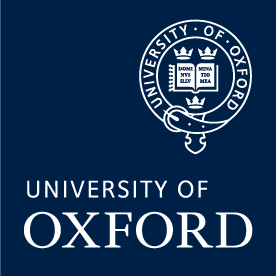Discovery of novel gene mutations in cerebellar ataxia
Elucidating key pathways affected in cerebellar disorders
Disease modelling using human iPSC-derived cerebellar neurons and organoids
Understanding Cerebellar Development and Disease
 ©
© Scientific American
©
© Scientific American
Welcome to the CEREBELLAR DISEASE Group!
We are interested in discovering the genes and biological mechanisms that regulate the development of the cerebellum and in exploring how the impairment of these mechanisms leads to cerebellar diseases.
The cerebellum is well-known as the primary centre of motor coordination and learning in the central nervous system. However, increasing evidence suggests a much wider function for the "little brain", including in higher cognitive functions such as language, emotion and social reward processing. We understand surprisingly little about the molecular processes that underlie the formation of the cerebellum and that, when disrupted, lead to disease. The goal of our research is to provide fundamental insights into the genetic, molecular and cellular mechanisms that govern the development and different diseases of the cerebellum.
One of the diseases that we are very interested in is cerebellar ataxia. Together with collaborators, we have identified the first dominant gene mutations in Spinocerebellar Ataxia type 41 (SCA41) and Spinocerebellar Ataxia type 44 (SCA44). Our earlier work characterized the ataxic Moonwalker mouse model. Ongoing studies focus on elucidating the role of aberrant mGluR1-TRPC3 signaling in cerebellar ataxia and how this could be exploited therapeutically.
In this 'See the Unseen' YouTube video, Beth Cole from our group talks about her electrophysiology experiments studying ion channel function in cerebellar ataxia.
Moreover, our group is one of the few laboratories worldwide who have developed a robust and reproducible method to generate cerebellar neurons and organoids from human induced pluripotent stem cells (iPSCs). This exciting technology allows us, for the first time, to study the development and function of human cerebellar neurons in the dish using available cells from healthy people as well as patients with cerebellar disorders. Watch this brief YouTube video by Jussi Tolonen from our group talking about his cerebellar organoid research. Recently, we have used this methodology to model the paediatric tumour medulloblastoma (see Van Essen et al 2024).
Together, our work provides a more rigorous understanding of the genes and pathways behind cerebellar diseases. We hope that our findings will ultimately help to inspire improved clinical treatments for patients.
Join the lab
We are an enthusiastic group of people from diverse backgrounds, who are passionate about research into the 'little brain'and working together in a positive environment to advance science and make a difference. Enquiries from motivated students and post-docs to discuss available research projects and funding possibilities are always welcome. Get in touch
Opportunities for DPhil/PhD projects in the Becker group are available through a number of DPhil/PhD programmes:
Outreach and Access
UNIQ+
We are offering projects and mentorship through the University's UNIQ+ graduate access programme aimed to provide students from under-represented backgrounds an opportunity to experience postgraduate study.
In2science
Our lab is proud to participate in the in2science programme that provides research placements for year 12 science students from disadvantaged backgrounds.
Empowered Women
Esther was one of the invited keynote speakers at the Empowered Women event in April 2014 that was hosted by the Charity Wishful Smiles together with Barry Gardiner MP at the Houses of Parliament.

In the media
How patient stories fuel ataxia research
The use of patient stem cell-derived mini-brains to study A-T, supported by Action for A-T
From school desk to lab bench: local students take part in In2Science programme
Report on the 2nd Biennual Oxford Rare Disease Initiative Conference
Using stem cells to battle brain diseases ATLAS of Science
Mutated gene gets mice 'moonwalking' New Scientist














